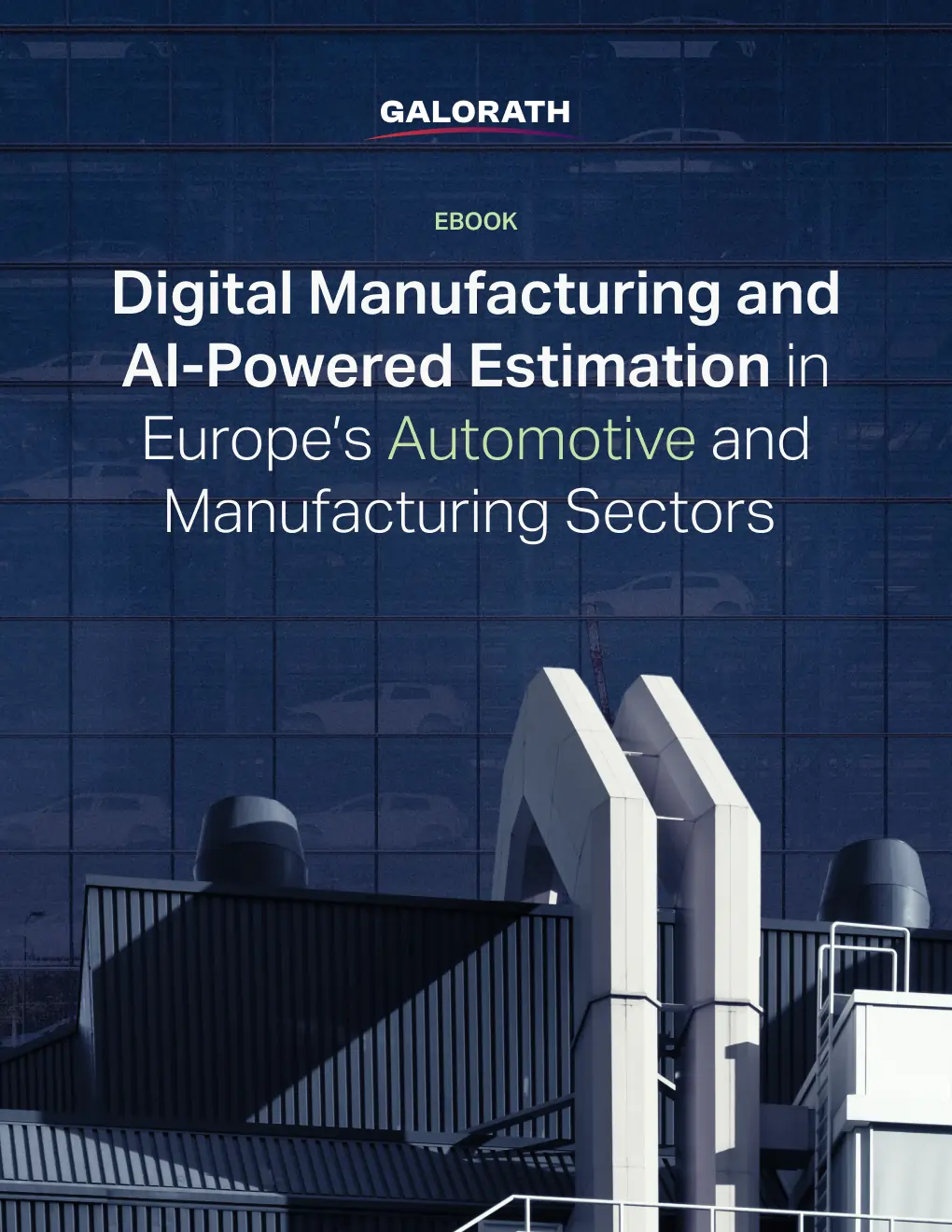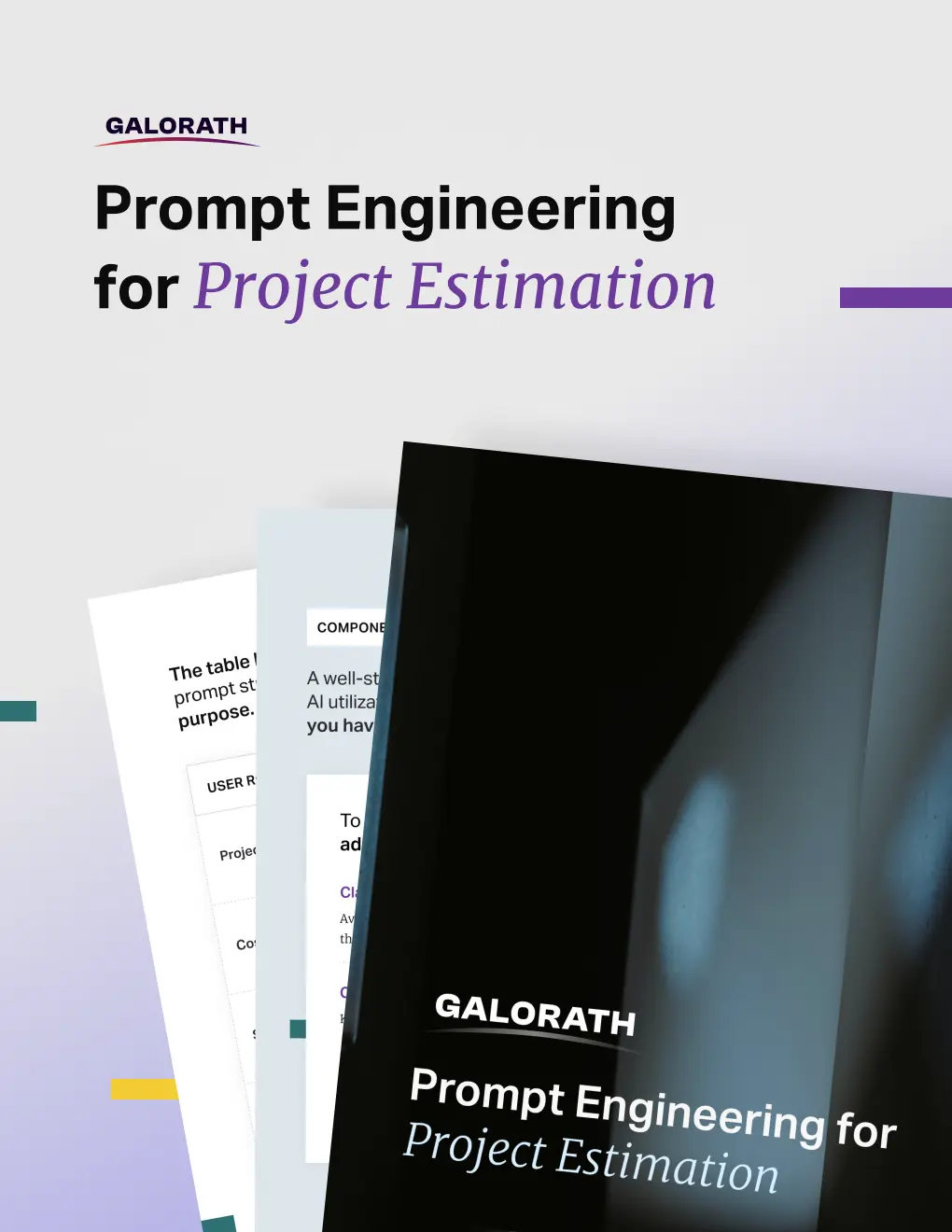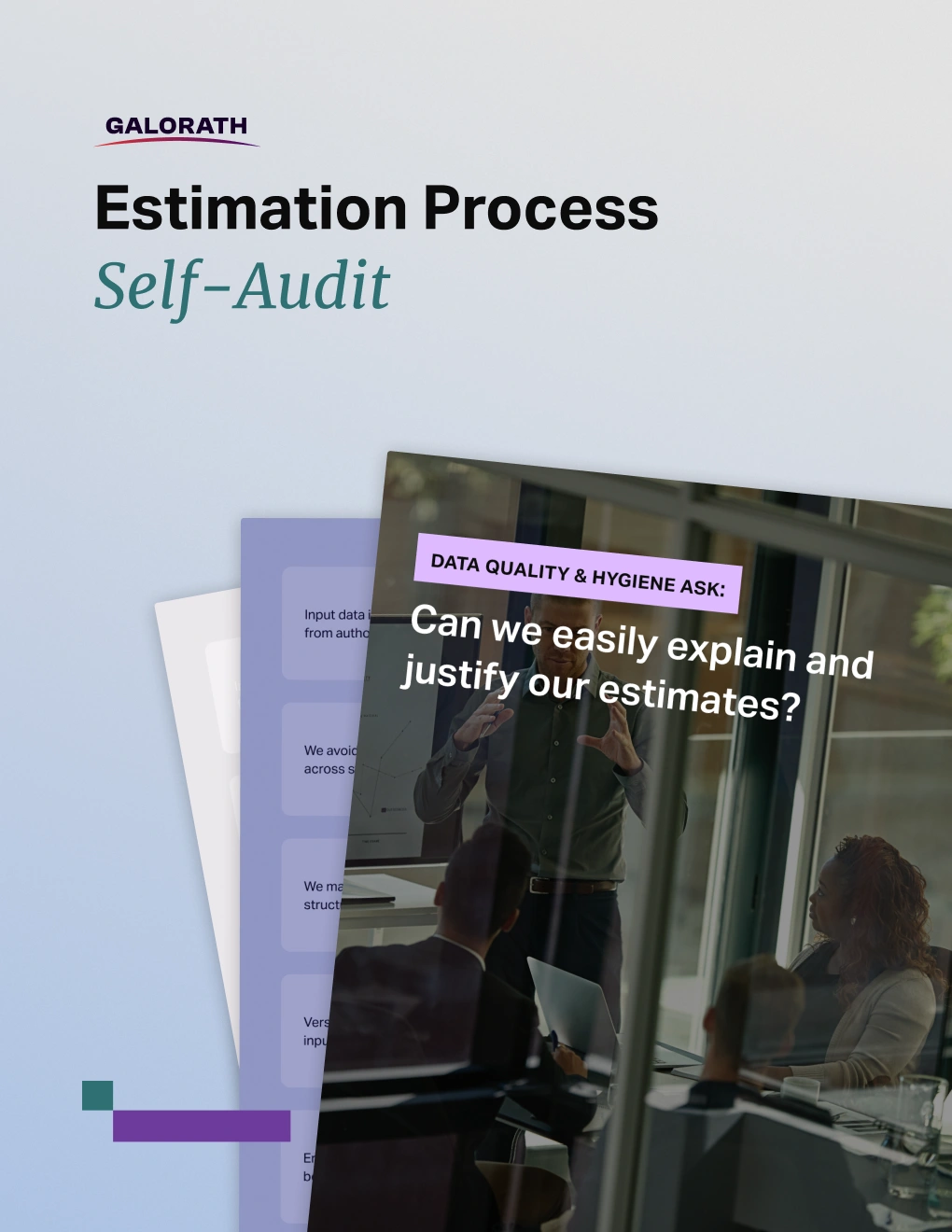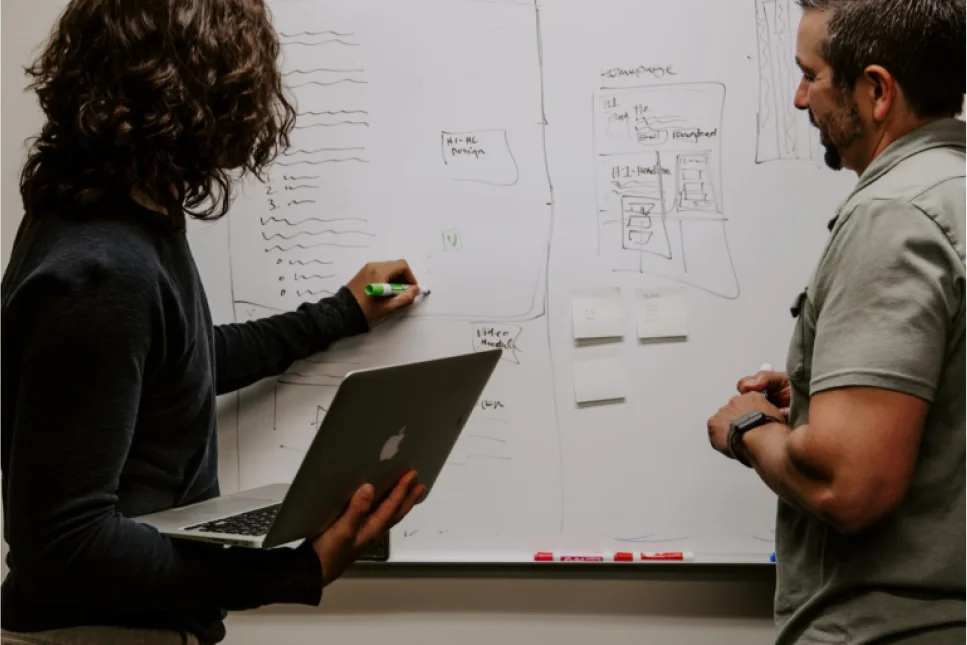Mastering Cost Risk with the CRED Model: A New Approach to Managing Uncertainty

Table of Contents
In 2025, the demands placed on project-based organizations are growing faster than most planning systems can respond. Economic pressure, unpredictable costs, regulatory shifts, and accelerating technology are exposing weaknesses in workflows that were never built to adapt this quickly. What worked in steady markets no longer works at all.
Executives are being asked to deliver more value with tighter budgets, greater accountability, and less margin for error. That requires more than better tools. It requires stronger alignment between strategy and execution, faster access to actionable data, and a renewed focus on workforce readiness. Planning is no longer just an operational function. It is a strategic differentiator that determines which organizations stay competitive and which fall behind.
In a volatile market, adaptability is no longer optional. It is a leadership imperative.
Galorath’s 2025 Industry Report on Cost, Schedule, and Risk identifies five urgent signals that are reshaping how organizations approach planning, technology, and execution. Based on data from more than 180 professionals across 10 countries and multiple sectors, the report reveals where companies are falling short, where they are investing next, and what it will take to lead in the year ahead.
Below are five trends that demand executive attention, along with the evidence that explains why.
1. Cost Volatility Is the Top Risk in 2025
A sudden tariff adjustment or commodity spike can add millions to procurement budgets overnight. For manufacturers, a 20% increase in copper or steel pricing can throw off the entire bill of materials. In construction or defense, union wage adjustments or labor shortages can reshape schedule assumptions mid-project. Without agile cost modeling, these shifts turn into blown budgets, delayed milestones, and weakened stakeholder confidence.
Eighty-nine percent of surveyed organizations named cost volatility as their most pressing operational risk. This includes unpredictable labor shifts, fluctuating material prices, and continued supply chain instability.
Inaccurate estimates and lagging systems are amplifying the impact. Many teams report frequent overruns and delays that planning teams cannot catch in time. The lesson is clear. Static models are no longer enough.
73 percent of organizations report regular budget overruns.
What can leaders do: Build flexible, scenario-based forecasting into planning processes.
2. Boards Expect Real-Time Cost Intelligence
Leadership teams and boards are asking for more than quarterly updates. They want timely, actionable insight into costs, risks, and tradeoffs. When a board asks how much a scope change will cost or whether a supply chain disruption requires budget reallocation, leaders can’t afford to say, “We’ll have that for you next week.” Decisions about funding, contracting, and risk need to be made in days, not months. Teams that rely on outdated systems often struggle to reconcile numbers fast enough to avoid reactive, high-risk decision-making.
Only a third of organizations have the systems in place to meet this expectation. Many still rely on fragmented tools, disconnected spreadsheets, or delayed updates that prevent fast, confident decisions.
More than 50% report data access issues that slow down executive decision-making.
What can leaders do: Treat system integration as a strategic priority, not a technical project.
3. AI Governance Is Becoming Essential
AI has moved from optional to expected in many project environments. But most organizations are still exploring its use without the structures to support it. Imagine a project forecast generated by an AI model that a finance executive cannot explain to auditors, or a government bid proposal that includes AI-generated cost breakdowns without documentation. In both cases, the technology creates exposure. Without governance policies in place, covering data sources, human review, and explainability, AI can introduce more risk than it removes, especially in regulated or public-sector environments.
Less than half of teams using AI have defined how it should be governed. As adoption grows, the lack of clear rules around accuracy, explainability, and compliance will limit its potential.
63 percent have not integrated AI into estimation or planning workflows.
What can leaders do: 63 percent have not integrated AI into estimation or planning workflows.
4. Skill Gaps Are Slowing Transformation
Tools are advancing faster than teams can keep up. Training and enablement remain a major blind spot for organizations trying to modernize cost estimation and forecasting. A company might invest in powerful forecasting software, only to discover that only one person knows how to use it properly and that person is out on leave. Or a team might receive a new AI tool, but without training, default to Excel because “that’s what we’ve always used.” In high-turnover environments or distributed teams, relying on informal knowledge transfer leaves organizations exposed when skilled individuals depart or priorities shift.
Many respondents said they lack access to workshops, documentation, or even basic guidance on how to use digital tools in daily work. The result is missed opportunities and overreliance on manual processes.
26 percent cite lack of training as the top obstacle to improving estimation.
What can leaders do: Embed role-specific learning into every tool deployment and model update.
5. Strategy and Execution Are Out of Sync
Leaders say they prioritize alignment. Project teams say they are fighting just to stay on budget. Executives might prioritize growth and market expansion, while project managers are juggling outdated tools, unclear scope, and last-minute change orders. Cost teams are held to accuracy targets, but leadership pushes for compressed timelines without revisiting estimates. These disconnects lead to scope creep, miscommunication, and blame shifting, all of which damage team morale and make it harder to deliver consistent results.
This misalignment is not just philosophical. It affects how success is measured, how resources are allocated, and how progress is reported. Strategic goals and operational realities must be brought back into focus.
Only 34% of cost professionals say organizational alignment is a success metric.
What can leaders do: Define shared metrics that connect executive goals to project outcomes.
What These Signals Mean for 2025
The five trends above are more than warning signs. They are a blueprint for modernizing cost, schedule, and risk planning.
Leaders who respond with clarity, speed, and investment will be better positioned to navigate uncertainty. Those who wait will find themselves reacting to problems their competitors have already solved.
Explore the full findings:
The 2025 Industry Report on Cost, Schedule, and Risk
10 Step Estimation Process Sample Checklist
View our 10 Step Estimating Process Checklist. This checklist should be tuned to the individual company’s needs and suggestions.
Estimating Total Cost of Ownership (TCO)
Find out how you can use Total Cost of Ownership (TCO) model to create an estimate which includes all the costs generated over the useful life of a given application.
Should Cost Analysis
Learn how Should-Cost Analysis can identify savings opportunities and drive cost efficiency in procurement and manufacturing processes.
ROM Estimate: The First Step Towards a Detailed Project Plan
Find out what ROM (rough order of magnitude) estimate is and why is it a crucial element of every project planning cycle.
Software Maintenance Cost
Find out why accurate estimation of software maintenance costs is critical to proper project management, and how it can make up to roughly 75% of the TCO.













